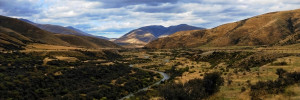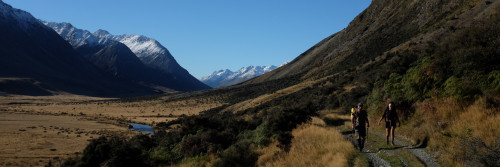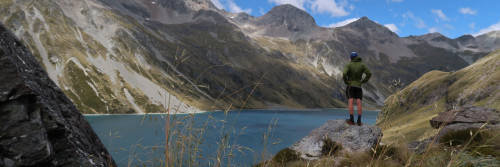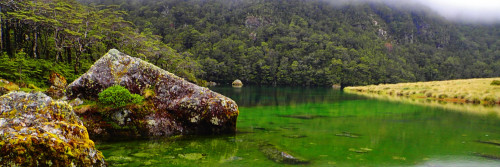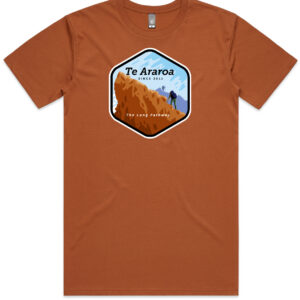7. Clothing and equipment
The best time to walk Te Araroa | Choosing a direction | How long it takes | Fitness and experience | Permits and fees | Accommodation | Clothing and equipment | Cost | Visas | Safety precautions | Fishing | Resupplying and food parcels | Getting to and from Cape Reinga | Getting to and from Bluff | Stewart Island Rakiura | Taking my dog, bike, horse | Navigating
There is a lot to consider with clothing and equipment.First think about function and safety. Then consider weight. This will help with choosing gear.
A full kit, including everything you may wear and carry for any situation, might comprise:
- Pack and pack liner
- Shelter - a tent or bivy bag, or a tarp, pegs and emergency blanket for use as a groundsheet.
- Sleeping - Sleeping pad, sleeping bag and silk liner
- Clothes for upper body - short sleeve top (mostly to walk in), long sleeve top, (mostly for camp), fleece, waterproof jacket, woollen hat, sun hat, gloves
- Clothes for lower body - shorts, waterproof trousers, long johns, 2 pairs of socks, boot or shoes
- food and water-related equipment - stove, pot, fuel, spoon, water bottle, and/or hydration system, lighter or matches
- Navigation and safety - maps, guidebook, compass, GPS, spare batteries, personal location beacon, torch
- Repairs - duct tape, needle, dental floss (for teeth and thread)
- Personal care - hand towel or cotton bandana, sunscreen, toothbrush and paste, toilet paper, sanitizing hand gel, first aid kit, plastic rubbish bag
- Miscellaneous - money, credit/debit cards
- Food and water - enough to get between resupply points
- A trowel and/or poo pot - for thoughtful disposal of toileting waste. Please do not poo outside and leave it there for future walkers to encounter.
- Dry bags for your sleeping bag and change of clothes
